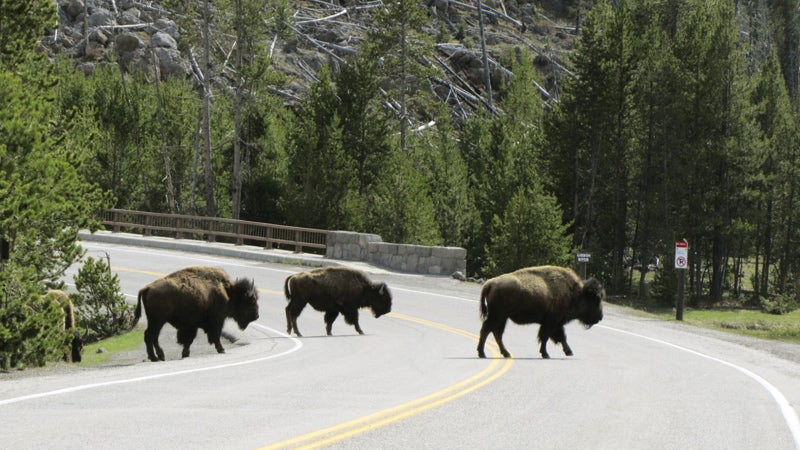No human knew about the 4.8 magnitude earthquake that shook the northern part of Yellowstone National Park on Sunday until it happened at 6:34 a.m., but some on Twitter and YouTube say that a group of bison in the park sensed it weeks before and fled.
Did this herd running down the highway away from Mammoth Hot Springs know something we didn’t? The that it had detected at least 25 minor earthquakes in the park since Thursday, and the Yellowstone Volcano Observatory has been tracking an area of recent uplift for seven months.
Jake Lowenstern, scientist in charge of the Yellowstone Volcano Observatory, says not to be fooled. He has yet to see any conclusive research that animals can predict earthquakes or volcanic eruptions.
“I have seen some of the YouTube videos,” Lowenstern said. “However, I don’t find them very convincing. Some do not appear to have been filmed recently. But even if the footage is new, anyone who has spent time at Yellowstone has seen bison running along the roads … into the park, out of the park, and within the park. A horn honking is enough to get them running.”
However, some European scientists hypothesize that birds and bats might be able to detect impending earthquakes by sensing fluctuations in the Earth’s magnetic field. Backed by the German Aerospace Agency and the Russian Space Agency, the International Cooperation for Animal Research Using Space .
According to University of Utah seismograph stations, Sunday’s earthquake occurred about four miles north-northeast of the Norris Geyser Basin and was felt in the Montana border towns of West Yellowstone and Gardiner, both about 20 miles from the epicenter. No damage has been reported, although some preppers wonder if it’s only a matter of time before the park’s supervolcano annihilates everything within a 500-mile radius, covering most of the country in ash and sending the planet into a prolonged nuclear winter.


